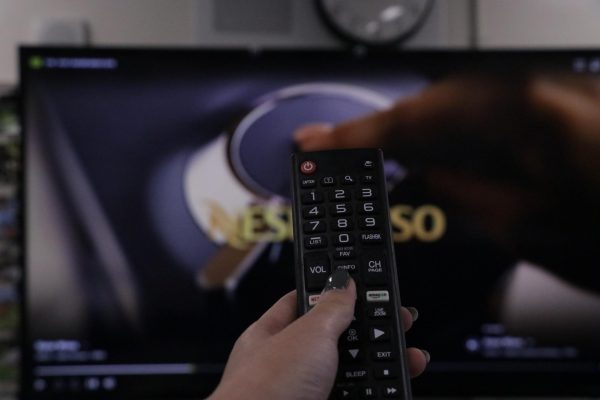You’re watching your favorite movie and as the final battle takes place, inching closer to the edge of your seat ready to see who strikes first, only to find yourself interrupted by several ads; An ongoing trend of advertisement after advertisement you’ve seen multiple times, in what seems to be an increasingly universal problem as streaming services add back ads.
Despite the many accredited inventors responsible for their own version of the television, we continue to reap the benefits of their creation. From cable television to the streaming services we now know and love, their prominence in our lives has only increased.
However, with this increase for shows on demand comes expectations. Many can agree that having the ability to watch what you want when you want is quite a luxury, similar to the pause button. On the other hand, many of the younger generations take these normalized comforts for granted, with ads being one of those things. As Math 1 teacher Crystal Guevara puts it, “I grew up in the 90s and ads were normal… we didn’t have to pay for TV [either].”
Physical Education teacher Matt Johnson agrees with this sentiment, stating how he, “grew up in a time… where you had to sit and watch commercials, or channel surf”.
Nonetheless, many have succumbed to the availability streaming services have brought to our time. That being said, with the reintroduction of ads into such services, many have been outraged at these additions. Senior Ariatna Maldonado explains that, “I feel like sometimes you need to [have] age restrictions on the ads…”

Beginning as early as 2007, services like YouTube had short advertisements to keep their platforms afloat, still maintaining viewer retention with short, skippable ads. Yugo Media explains how the first in-video ads aired on YouTube in 2007, and 2008, YouTube introduced pre-roll ad.
In 2010, Hulu did the same but later opted to have an ad free option to their selection of services in 2015. Subsequently, a year after COVID-19 hit, HBO Max implemented ads in 2021, with major companies like Netflix and Disney + following soon after in 2022. Since then, many major streaming services have done the same, integrating advertisements into their programs while still requiring the same monthly fees.
Streaming services have ads because they help businesses reach an audience and share their products. Companies can show their ads to people who are most likely to be interested in their products. This helps businesses connect with the right customers and makes advertising more effective.
Ads are also a big way for streaming services to earn money. Some services charge lower subscription fees or offer free options because they make up the difference with ad revenue. This means the ads help keep costs down for viewers while still allowing the service to run. Without ads, many streaming platforms might have to charge higher fees, and some people wouldn’t be able to afford them.
Another reason for ads is that they help build trust with customers. When people see a product advertised often, they might start to feel more familiar with it. This can make them more likely to try it. Ads also inform customers about new products or deals they might not know about otherwise. Over time, this can increase sales and even bring in new customers who are curious about what they saw in the ads.
In spite of differences in both upbringing and age, many can agree that the introduction of advertisements to many mainstream services can be quite an inconvenience. As senior Mario Torres argues, “If I’m already paying for a service, why do I need ads?”
Furthermore, for those who do pay for the services, the appearance of advertisements is truly seen to defeat the purpose of paying.

While the ability to select shows and movies at the click of a button can be nice, by having ads, streaming services stray further from their claims of affordable streaming, making the act of spending money on these billion-dollar companies pointless. Spanish teacher Johan Cordero continues this idea, stating that, “Ads are basically commercials, and If I wanted that, I would have just kept cable television.”
Similarly, Senior Desteny Fletes says that while, “some [advertisements] are [important] just to get awareness… there are some that don’t really matter”
From important advertisements on life-threatening diseases to the multitude of car sales, new TV shows, and dollar menu meals, advertisements can wear the patience of many, thin. Even now, though older shows and programs were built around small ad breaks, many newer shows, and even movies, are not. Through implementing a multitude of advertisements in streaming, the underlying purpose of said services is defeated.
Media Center Clerk Bobby Sanchez furthers this point, explaining how compared to live television, “movies aren’t made to be broken up, they’re made to be watched in one, or two hours sitting”.
Along with this, streaming services continue to increase their monthly pricing. Netflix states that, “Plans range from $6.99 to $22.99 a month”
With these steadily climbing rates and no end in sight, it’s no wonder consumers are annoyed. As these once readily available mainstream services make their climb to the top, so do their prices; but at what cost?
If you agree or disagree with this topic, let us know by taking this optional 5 question poll to tell us what you think about streaming services and the ads that they have.












